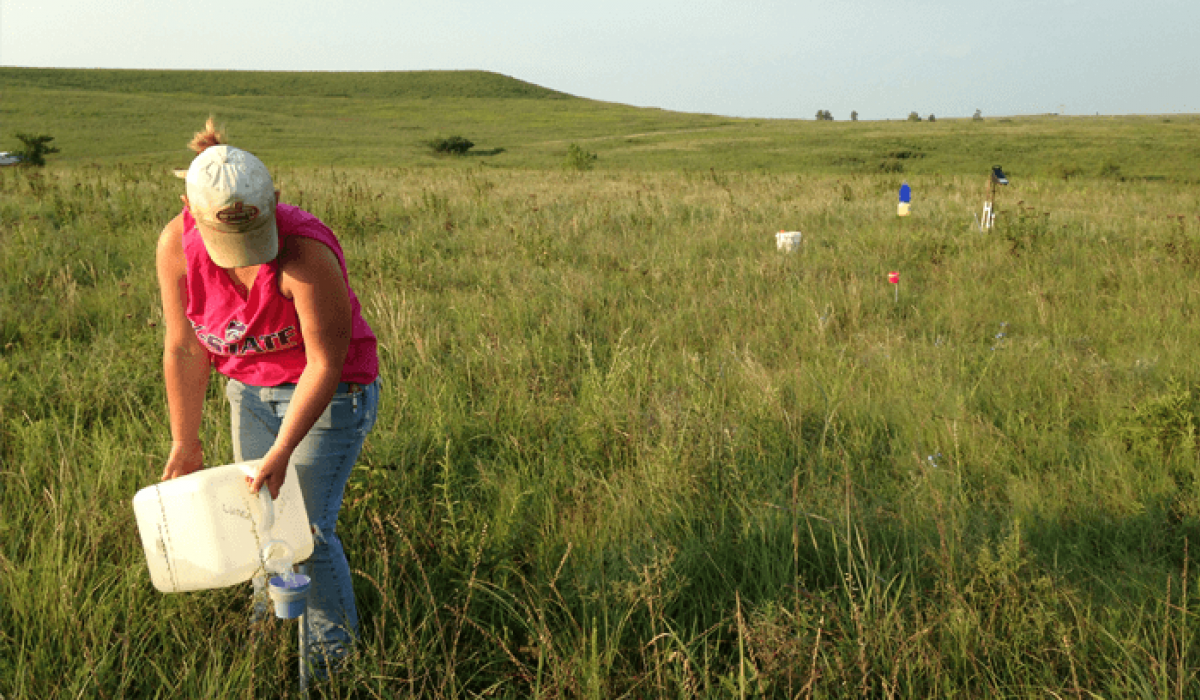
North American rangelands are managed primarily for livestock production, yet they have enormous potential to conserve native biodiversity while maintaining livestock productivity. Although pollinators are critical to the maintenance of healthy rangelands, livestock production, ecosystem services, and economies, they are a group of wildlife of greatest conservation concern that would benefit directly from changes in current rangeland management practices. Patch-burn grazing is a rangeland management practice that maintains cattle production metrics while increasing wildlife habitat heterogeneity. This study examines the response of native pollinator species richness and abundance in cattle pastures throughout the Flint Hills ecoregion to traditional rangeland management practices as compared to patch-burn grazing. Results indicate a twofold increase in relative pollinator abundance in patch-burn grazing pastures as compared to annually burned and grazed pastures, which is driven by increases in both native bee and butterfly abundance (ps <0.05). Additionally, there is a threefold increase in native bee species richness in patch-burn grazing pastures, as well as a twofold increase in butterfly species richness (ps <0.05). Three grass skippers of greatest conservation concern are only found in patch-burn grazing pastures, and regal fritillary abundance is substantially higher in patch-burn grazing pastures. Lastly, patch-burn grazing has more spatially explicit patches of habitat heterogeneity as measured by vegetative structure and plant species composition (ps <0.05). These findings indicate that patch-burn grazing has significant potential to conserve and restore one of North America’s most threatened taxonomic groups of wildlife, native grassland pollinators, with one it’s most dominant land-use enterprises, cattle grazing.
Project currently funded by the Department of Entomology at Kansas State University and the Kansas Department of Wildlife, Parks and Tourism (project: Pollinator responses to rangeland management practices in the Flint Hills ecoregion).
